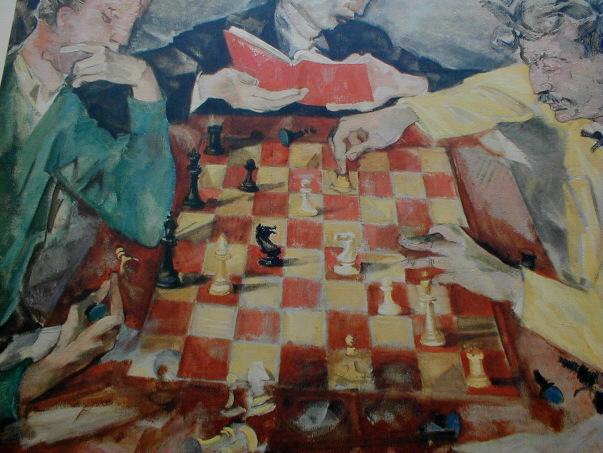This is a continuation of my last post and I suggest that you read that first if you haven’t already.
A very common theme in the KGA is that the play revolves around blacks f4 pawn and blacks struggle to hold on to it. Often it is directly protected by playing the Kierseritzky variations by the move 3….g4. A common attacking theme by white is to weaken the pawn structure by playing h4 immediately: This weakens the pawn structure it however creates an attack on the Knight on c3. The drawback of the not playing the immediate h4 and playing a developing move ie Bc4, Nc3 is that it gives black a tempo to play h6 strengthening blacks pawn structure and not forcing black’s g4 when later threatened by h4.
In the Kierseritzky gambit, the Knight goes to a momentarily safe spot on Ne5. Then you have 8 variations of next moves. Black next move in the Kierseritzky gambit has different purposes and depending on this move determines whites 6th move. In most cases the correct response for whites 6th move is d4 since it is multipurpose controls the center, supporting the Knight on e5 as well as opening up a discovered attack on the pawn on f4. So my rule of thumb on the sixth move is unless there is a very specific reason not to play d4: play it. The chart below talks of the reason behind each of the move.
Here are the variations of the Kierseritzky gambit, the purpose as I see it as well as whites proper response and why.
The first moves of all Kierseritzy Gambits are
1 e4 e5 2. f4 fxe5 3. Nf3 g5 5 4. h4 g4 5. Ne5
Kierseritzky Variation and the Idea behind it Whites Response and purposeKieseritzky Gambit, Polerio defence5..Be7 followed by a disruptive check on h4 6.Bc4 aiming at f7 and opening escape square for King
Kieseritzky Gambit, Rosenthal defence5..Qe7 direct attack on Knight e5 6.d4 protects and threaten f4
Kieseritzky Gambit, Viennese defence5…Nc4 attack on N on e5 6.d4 protects and threatens f4
The Long Whip5...h5 direct protection of g4 6.d4 protects and threatens
Kieseritsky Gambit Paulsen Variation 5..bg7 threatens N and protects R on h8! 6.d4 protects and threatens
Kieseritsky Gambit Kolisch Defense5..d6 threatens N and opens lines 6. Nxf4 move it or lose it!
Kieseritzky Gambit, Berlin defence(5...Nf6)5..Nf6 counterattack on e4 forsaking f4 6.d4 protects and threatens
Kieseritzky Gambit, Brentano defence5… d5 opens up the center 6.d4 builds center
Gallagher feels that the Kolisch although not having a good reputation offers Blacks best chances along with the Berlin Defense. The long whip is not considered strong due to h4 is played where a developing move would be better. Morphy had a very strong game against this which can be seen here in my
Kieseritzky Game Collection. The Paulsen which enjoyed a long popular following is not seen as strong a continuation at this point according to Gallagher . However all of these may be okay to play at my level.
A way that black can prevent a Kieseritzky style game is the Fischer Defense. The idea here is to play
1 e4 e5 2. f4 fxe5 3. Nf3 d6 5 4. h4 g4 where now White is unable to play the Knight to the sweet square e5. there are two alternatives: Ng5 where after g4 white is forced into the knight sac N x F7 the Algaier Gambit which is considered to be unsound. Normal play by white is Nf1 then moved to d4.
A couple of ideas about the pawns, the f pawn on f4 moved to f3 and supported by g4 can create a sacrifice opening up White kingside pawn structure. This is a common continuation in the Fischer Defense.
In most KGA variations, White looks to take that f4 pawn as soon as he can do so safely even at the expense of his e4 pawn.
The continuation of the Schallop Defense below is a case in point.
1. e4 e5 2. f4 exf4 3. Nf3 g5 4. h4 g4 5. Ne5 Nf6 6. d4 d6 7. Nd3 Nxe4 8. Qe2 Qe7 9. Bxf4
Blacks g pawn is not strong and shields Blacks attacks on white kingside. Even though black has a kingside majority the extra pawn is in this position is often worthless. It is often easily blockaded by white.
You can take a look at
some representative Fischer Games by looking at my chessgames collection many are from Gallaghers book.
Tempo spoke of the main idea of the King Gambit is that black misplaced pawn on f4 allows white to build a strong center. Black is under the illusion that he has good attacking chances and launches an immediate unsound attack while neglecting his development. (Sounds like my troubles against the Sicilian 8). Blacks uncoordinated pieces and white strong center and quickly built attack often leads to interesting sacs and mating nets.
Here is a link to a good website that speaks to the
ideas of the King Gambit for Black and White.
More to follow.


